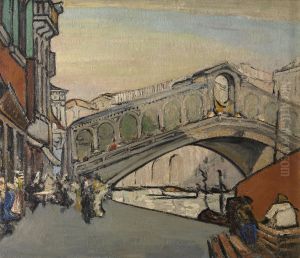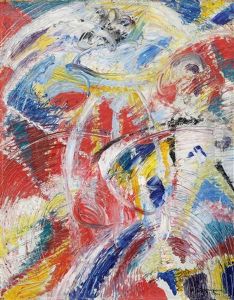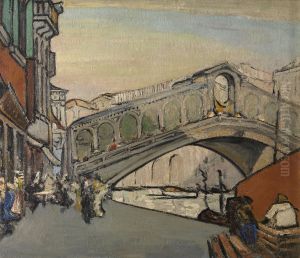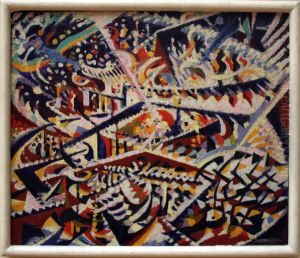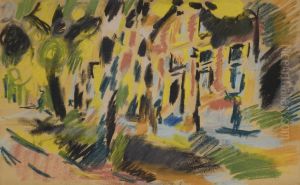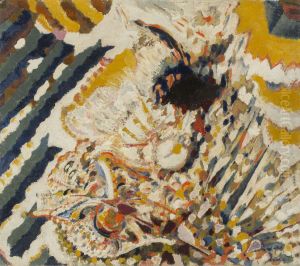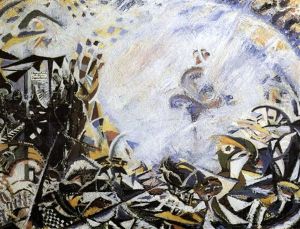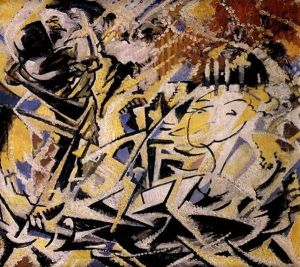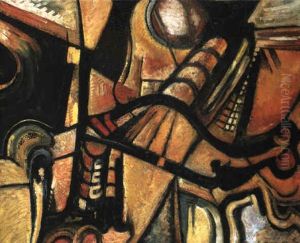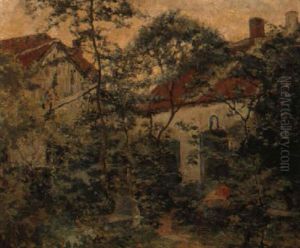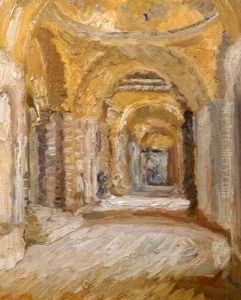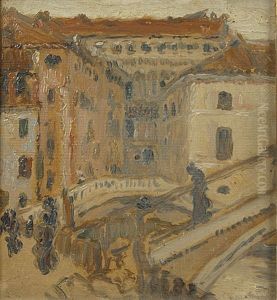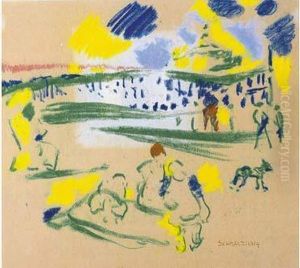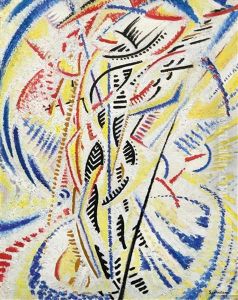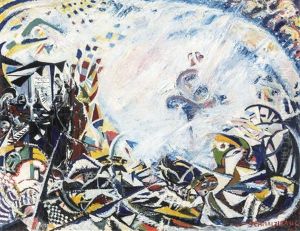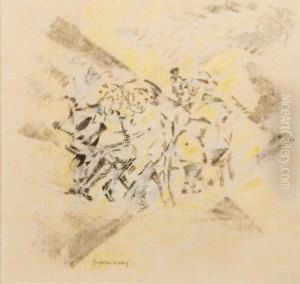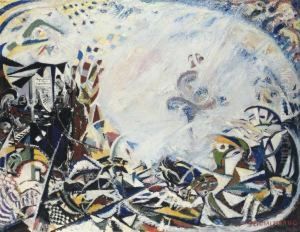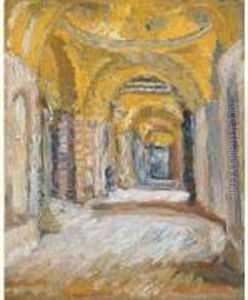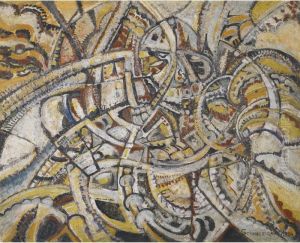Jules Schmalzigaug Paintings
Jules Schmalzigaug was a Belgian artist known for his contribution to the Futurism movement, an artistic and social movement that emphasized speed, technology, youth, and violence, and objects such as the car, the airplane, and the industrial city. Born in Antwerp, Belgium, on August 24, 1882, Schmalzigaug's work is significant for incorporating Futurist principles with a distinctly Belgian sensibility, bridging a gap between Italian Futurism and broader European modernist movements.
Schmalzigaug's early life was characterized by a cosmopolitan upbringing that exposed him to a variety of cultural influences. He lived in various European cities, including Venice, which deeply influenced his artistic vision. His exposure to the vibrant cultural scenes across Europe, particularly Italy, played a crucial role in his development as an artist. Schmalzigaug was particularly drawn to the dynamism of the Futurist movement, which sought to break away from the classical past and embrace the modern world's energy and movement.
Throughout his career, Schmalzigaug exhibited his work in several important exhibitions, showcasing his ability to capture movement and light in his paintings. His works often depicted scenes of urban life, incorporating elements such as bustling city squares and racing automobiles, characterized by vibrant colors and dynamic compositions that sought to convey the sensation of movement and the chaos of modern life.
Despite his promising career, Schmalzigaug's life was cut short when he died by suicide in 1917, amidst the turmoil of World War I. His death marked a tragic end to a burgeoning career that had begun to gain recognition among his contemporaries. In the years following his death, Schmalzigaug's contribution to the art world has been reassessed, and he is now celebrated as a pioneering figure in Belgian modern art. His work not only contributed to the development of Futurism but also laid the groundwork for future generations of Belgian artists to explore modernist themes and techniques. Today, Jules Schmalzigaug is remembered as a key figure in the early 20th-century European art scene, whose work continues to inspire admiration and scholarly interest.
